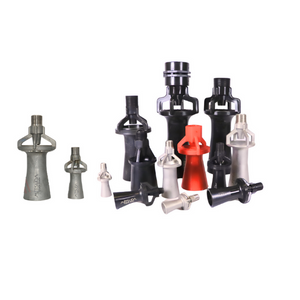
A tank mixing eductor is a device used to facilitate mixing within tanks or vessels by utilizing the Venturi effect. Here's how it works and how it facilitates mixing:
Principle of Operation: Tank mixing eductors operate based on the principle of the Venturi effect. This effect occurs when a fluid flows through a constricted section of a pipe, causing the velocity of the fluid to increase and the pressure to decrease.
Fluid Flow: A high-pressure fluid (typically liquid) is introduced into the tank mixing eductor through an inlet port. As this fluid passes through the eductor, it flows through a narrow section known as the Venturi tube or nozzle.
Venturi Effect: As the high-pressure fluid enters the Venturi section, its velocity increases, leading to a decrease in pressure according to Bernoulli's principle. This decrease in pressure creates a suction effect.
Secondary Fluid Intake: The suction generated by the Venturi effect draws in a secondary fluid (often the contents of the tank or vessel being mixed) through a separate inlet port or suction line.
Mixing: The secondary fluid is entrained by the high-velocity stream of the primary fluid inside the eductor. As a result, the two fluids mix thoroughly. The mixed fluid is then discharged back into the tank or vessel.
Turbulence and Circulation: The mixing process generates turbulence within the tank or vessel, promoting thorough mixing of the contents. This turbulence helps prevent stratification and ensures uniform distribution of components within the tank.
In summary, a tank mixing eductor facilitates mixing within tanks or vessels by utilizing the Venturi effect to create a suction force that draws in and entrains the surrounding fluid. This promotes thorough mixing and circulation, making tank mixing eductors valuable tools in various industries, including chemical processing, water treatment, and industrial mixing applications.
